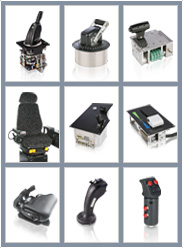News & Events
‘Come get your armor, nerds!’ said RonBurgundy69. He placed a container on the ground and danced around it. I wish he could’ve seen my grin. It was the kind of small light-hearted gesture that kept an entire evening of Rainbow Six Siege from teetering off into a hapless string of simple mistakes, head-to-keyboard contact, and creative insult slinging. Because without teamwork, no matter how messy, Siege is just another deathmatch shooter, one where you can reinforce or smash walls. But with teamwork, Siege is a game where you can reinforce or smash walls and tiny, fleeting relationships—more dating sim than twitch test, and it’s this special social element, combined with an impressive amount of tactical depth, that makes Siege one of the best competitive shooters I’ve played.
Rainbow Six Siege’s primary mode is five-on-five objective-based multiplayer, with each team either defending or attacking an objective. But you don’t just get thrown in and shoot one another willy-nilly. Every round opens with a planning phase, in which the defending team uses character abilities and resources (wall reinforcements, barbed wire, traps, explosives) to slow down, distract, or destroy the enemy team’s encroachment. During this phase, the attacking team sends in tiny remote control drones to sneakily survey the defense. Holding down a button marks the last spotted position of defending players, while other defensive structures are communicated over voice chat. While this is happening, each team is ideally coming up with a strategy.
We need to talk
Plans initially form based on which operators are picked, because their special abilities arm the team with different tools. On offense, we might focus on making noise and chaos by choosing characters who can break reinforced structures, send a series of cluster grenades through walls, and carry flash grenades. Or we could go in surgically, assembling a team that can detect and take out electronic devices, carry big riot shields, and precise weaponry.

A plan might then evolve based on the recon stage. After scouring the map with drones on offense or stationary cameras on defense, we consider where the enemy might come from and base our strategies around map advantages or disadvantages. With destructible surfaces, it’s important to remember that sightlines aren’t just limited to open doorways or windows, but any breakable surface. Each map is a labyrinth of levels, rooms, and surface types, littered with all sorts of domestic debris. The aural landscape is decidedly less busy, the only component beyond natural ambience (the low hum of a refrigerator, a distant house party, barking dogs) are the footsteps of players and short bouts of percussive violence. It’s an eerie effect that contributes to the urgency of proper preparation. There’s less than a minute to find the objective or set up defenses, which imbues every decision with weight and consequence. For RonBurgundy69, throwing down that body armor was probably quite the thrill.









